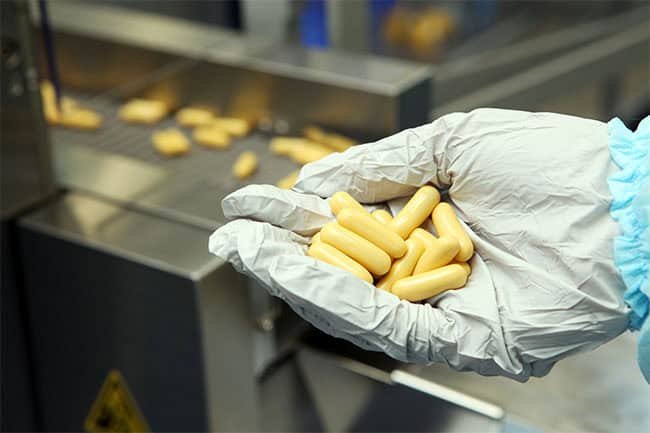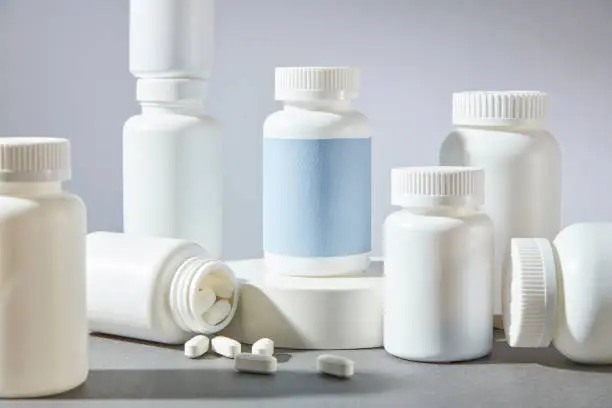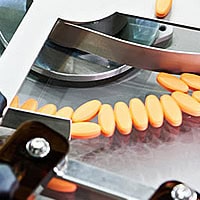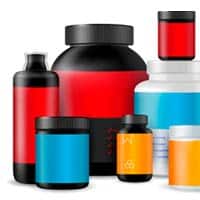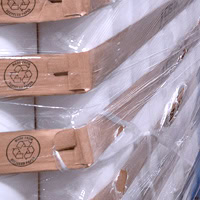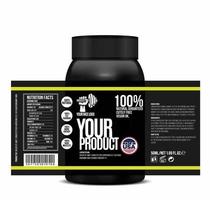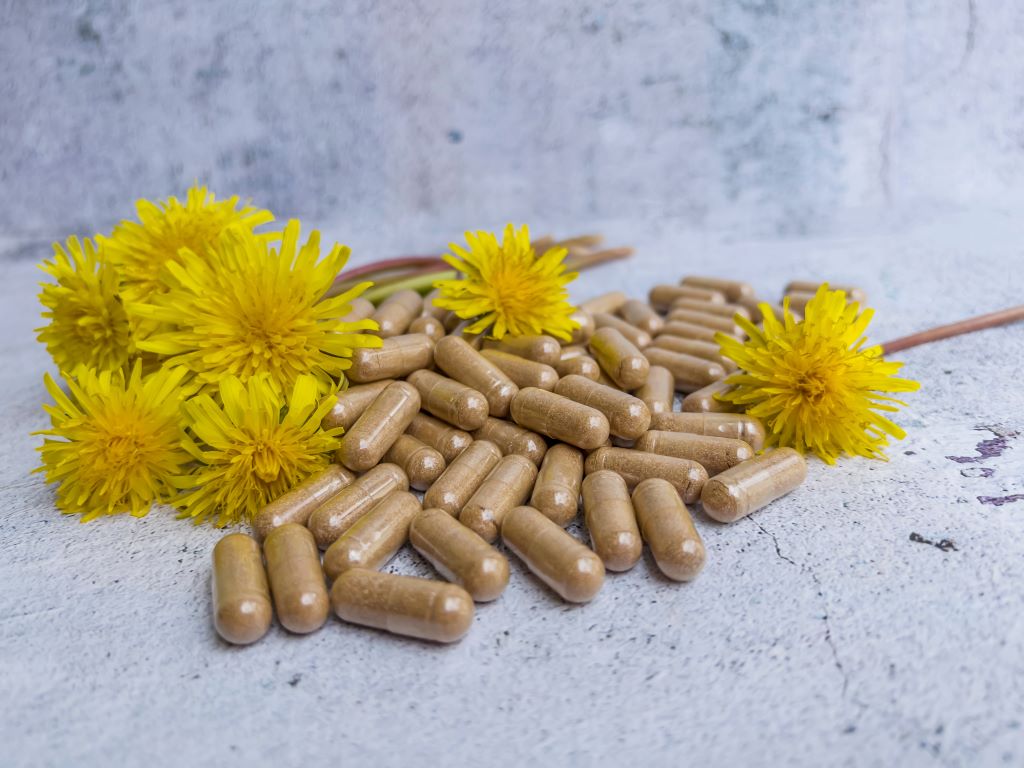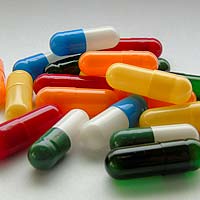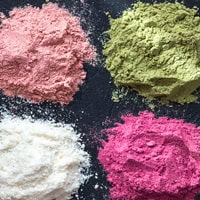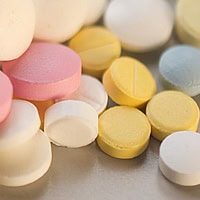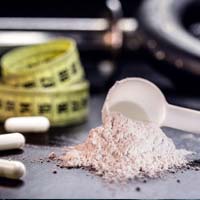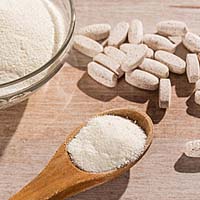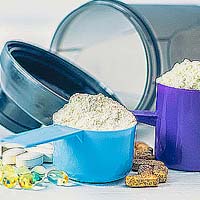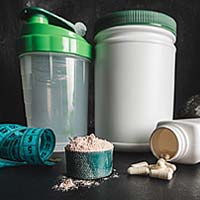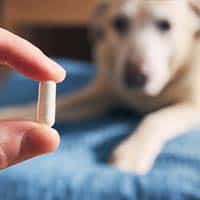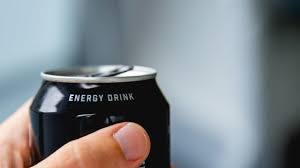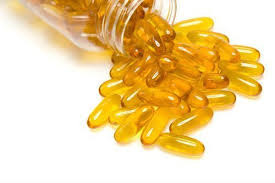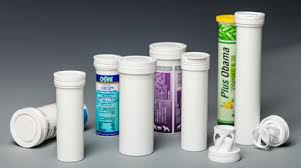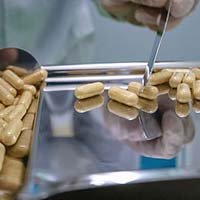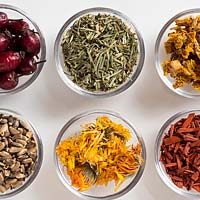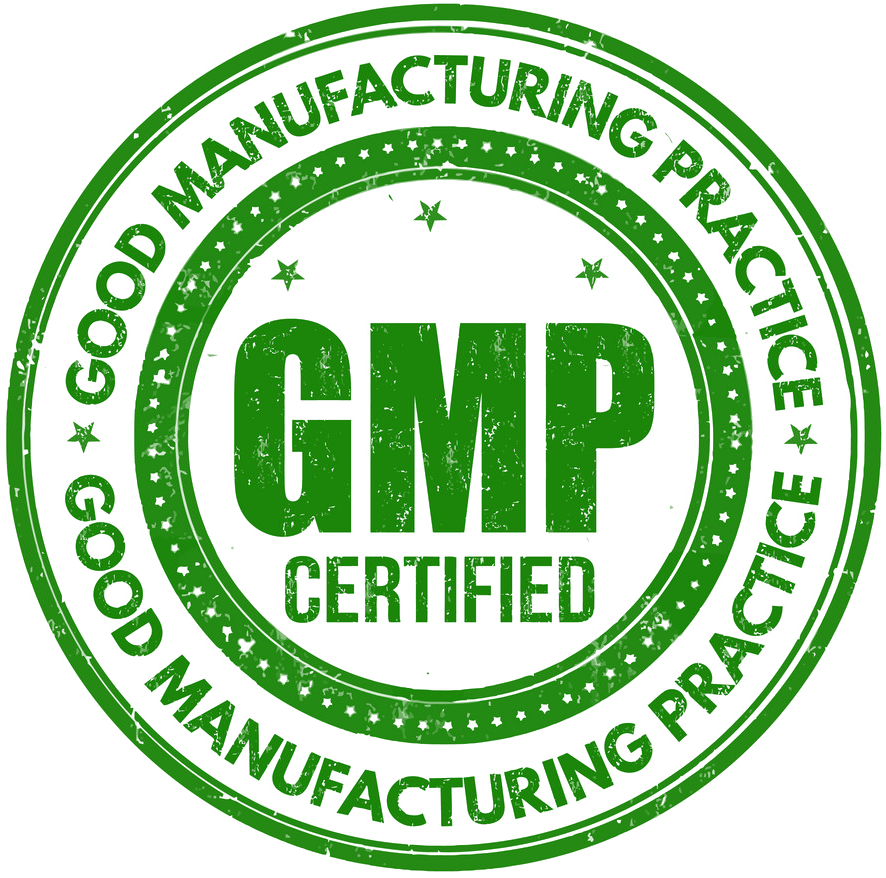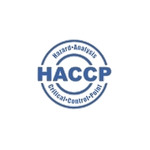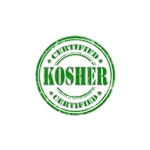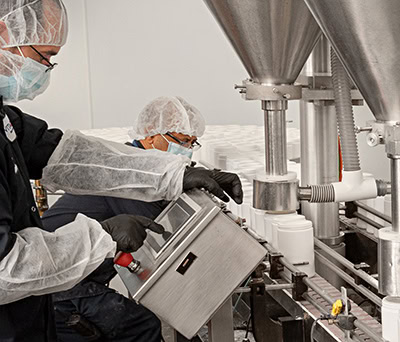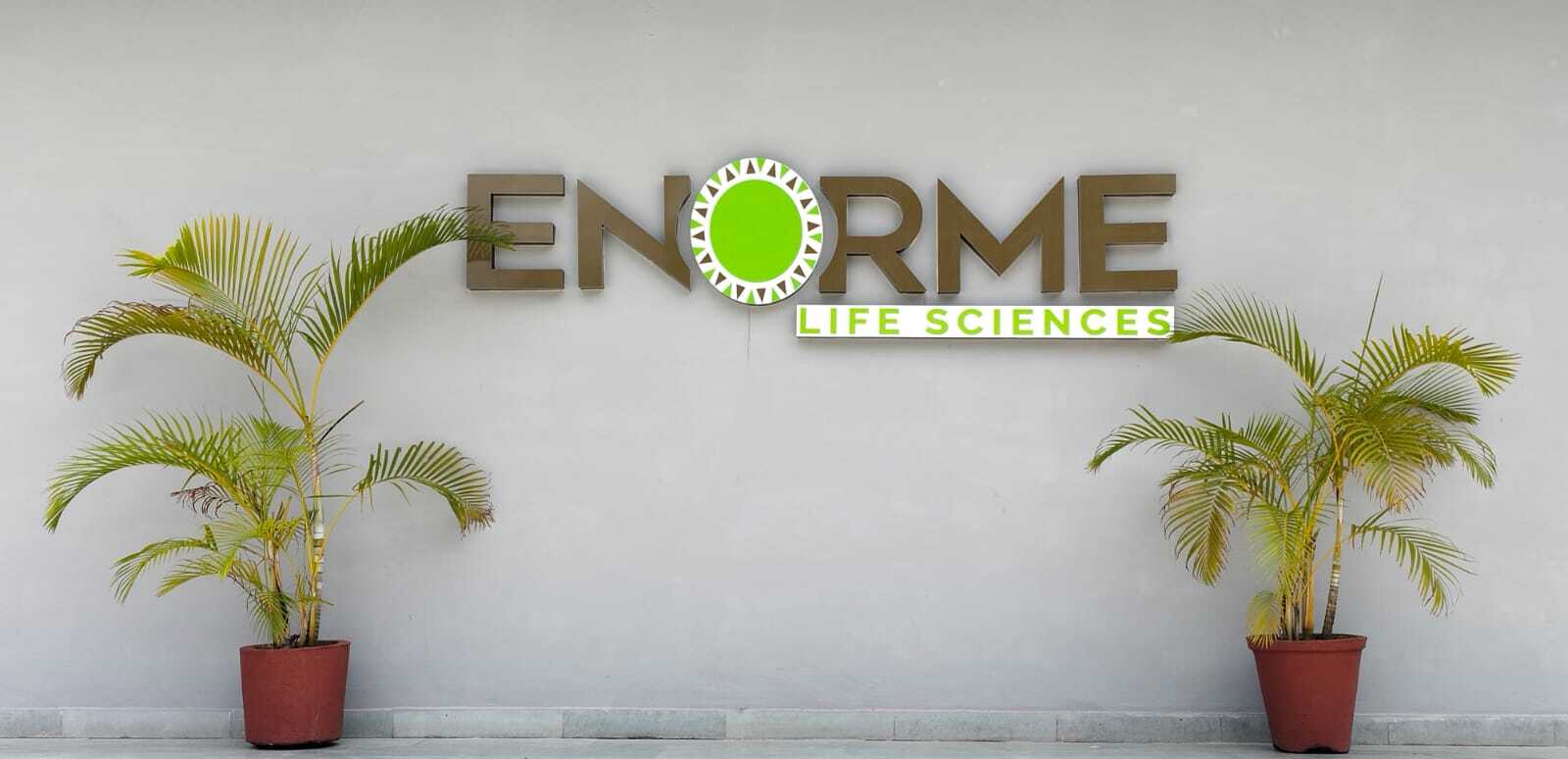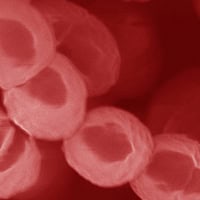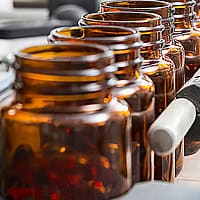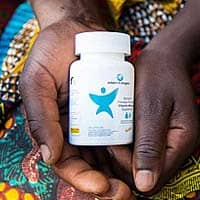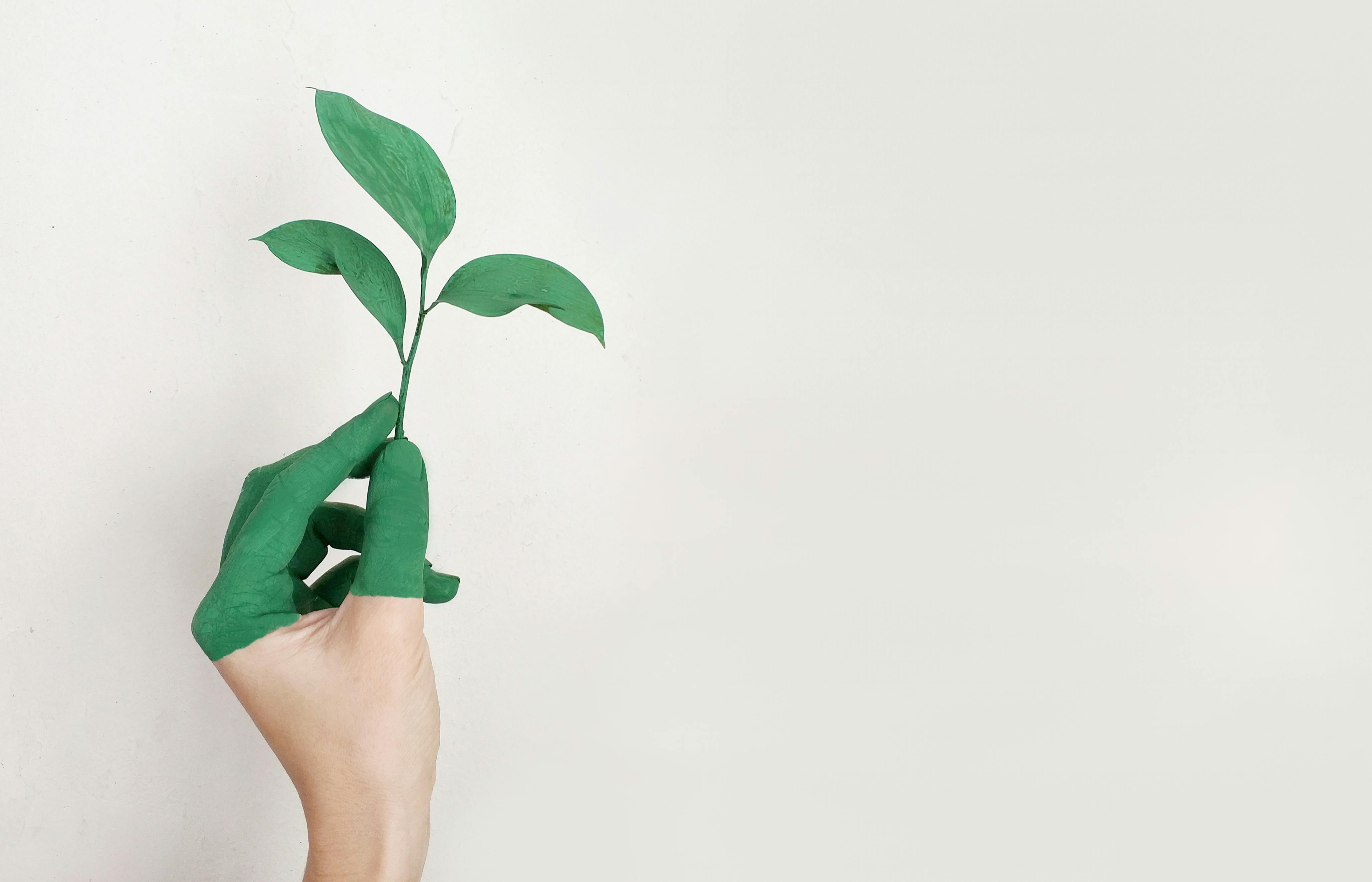Packaging Solutions in the Nutraceutical IndustryOur packaging solutions are designed to protect your product and impress your customers
Our Nutraceutical products from vitamins and supplements to herbal remedies and functional foods – require packaging that preserves their quality, ensures safety, and appeals to consumers.The choice of packaging format can affect a product’s shelf life, convenience of dosage, and overall customer experience. Below, we explore the main types of packaging used in the nutraceutical sector (bottles, blister packs, sachets, pouches, jars,etc.), their purposes and suitability, common materials, regulatory considerations, and emerging trends. A comparison table is also provided to summarize packaging formats and typical applications.
Bottles
Bottles are one of the most versatile and widely used nutraceutical packaging formats
They can accommodate tablets, capsules, softgels, or liquids in various volumes, making them suitable for a broad range of products
Bottles come in glass or plastic: glass is often preferred for sensitive liquids or long-term storage due to its superior barrier properties, while plastics (like PET or HDPE) are popular for tablets and capsules because they are lightweight and shatter-proof
For example, amber glass bottles are commonly used to protect light-sensitive liquid supplements (the amber tint blocks UV rays) whereas opaque HDPE or PET bottles are typical for vitamins and capsules
Materials & Features: Nutraceutical bottles are typically made of food-grade plastics such as HDPE (high-density polyethylene) or PET (polyethylene terephthalate), or sometimes polypropylene (PP). These plastics are chemically inert and provide good moisture and oxygen barriers
Glass bottles (usually Type III soda-lime glass or Type I borosilicate for high purity) offer excellent chemical inertness and gas barrier, ensuring no interaction with the contents.
Bottles usually have screw caps, often with tamper-evident seals (e.g. induction foil seals or shrink bands) and child-resistant closures for safety-sensitive supplements. Inside bottled tablet packages, desiccants or cotton coils may be included to control moisture and cushion the contents during shipping
Bottles are available in various sizes and shapes, giving brands flexibility in packaging design and allowing room for labeling to provide required product information.
Purpose & Suitability: Bottles offer excellent product protection and durability, keeping nutraceuticals safe from moisture, oxygen, and physical damage
hey are convenient for consumers to store and use: a single bottle can contain an entire course of supplements, and the wide openings of “packer” bottles or jars allow easy access to the product
However, the consumer must measure or count each dose (unless an included dropper or scoop is provided for liquids or powders
Bottles are reclosable, which is ideal for multi-dose use over time, but each opening can expose the product to air or humidity – hence the importance of resealing and including moisture absorbers if needed. Overall, bottles are favored for products that patients or consumers will take regularly at home, such as monthly supplies of vitamins. In fact, bottles remain the largest and fastest-growing packaging type in the nutraceutical market (alongside blisters/strips) due to their versatility and convenience.
Blister Packs
Blister packs (also called blister cards or strips) are a unit-dose packaging format commonly used for pills, capsules, and lozenges in both pharmaceuticals and nutraceuticals
A blister pack consists of a pre-formed plastic or foil cavity (or pocket) that holds a single dose, sealed with a lidding material such as aluminum foil or plastic film.
Each pill or capsule is individually enclosed, and the consumer pushes it through the lidding (push-through foil) or peels off the backing to retrieve the product
Materials & Construction: Blister cavities are often made from thermoformed PVC (polyvinyl chloride) or other polymers like PET or polypropylene, which provide shape and basic protection.
For higher barrier needs, laminates like PVDC-coated PVC or cold-form aluminum foil (forming a complete aluminum pocket) are used to protect extremely moisture-sensitive or light-sensitive products. The lidding is typically aluminum foil, sometimes with a heat-seal coating that adheres to the plastic blister.
This foil backing provides an excellent moisture, oxygen, and light barrier, protecting each dose until use.
The individual sealing prevents cross-contamination between doses and keeps unused portions fresh and uncontaminated even after one dose is removed.
Purpose & Suitability:The primary goal of blister packaging is to keep each unit dose safe and intact. Because each pill is separately sealed, blisters offer complete protection from moisture, air, and microbes for each dose.
This format is ideal for sensitive tablets or capsules that might degrade if bottled with exposure to humidity (for example, probiotics or effervescent tablets). Blisters also provide dosage convenience patients can easily track their intake (often the backing foil can be printed with days or numbers) and carry just the required number of doses. The format is lightweight and portable, making it travel-friendly
Blister packs are also inherently tamper-evident, since a punctured or broken blister is obvious to the consumer.
They can be made child-resistant by using harder-to-press materials or requiring a peel step On the shelf, blister packs (especially when attached to a branded cardboard backing in a blister card format) offer good shelf appeal and space for branding and information. The downside is that blisters typically use more packaging material per dose and may increase unit cost, but for many nutraceutical products the increased protection and compliance benefits are worth it. Blister packs are the other dominant packaging type in nutraceuticals (often used for unit-dose packaging of dietary supplement pills and capsules), and their popularity is growing due to the convenience, product protection, and shelf-life advantages they provide.
Sachets
Sachets are small flexible pouches that typically contain a single serving of a powder, granules, or liquid. In nutraceuticals, sachets are often used for powdered drink mixes (e.g. vitamin C powders, protein single-serves), electrolyte mixes, or even liquids like gel supplements. They can also be used to hold a day’s dose of multiple pills (as in personalized vitamin pack subscriptions). Sachets come in various shapes (often flat rectangular packets) and sizes, and they are usually sealed on all sides. They may be teared open by hand (often with a notch or perforation to assist).
Materials: Most sachets are made from multi-layer laminated films to achieve the necessary barriers. A typical nutraceutical sachet might use layers such as PET (polyester) for printability and strength, aluminum foil for an oxygen/moisture barrier, and PE (polyethylene) or another heat-sealable layer on the interior for sealing.
Some sachets use high-barrier plastics without foil, especially if transparency is desired, but foil laminate is common for protecting sensitive contents (it provides an excellent moisture barrier to keep powders dry.
The materials are food-grade and designed to not interact with the product. Sachets can be made single-use (tear and discard) or occasionally resealable (with a small zip closure) if they contain multiple servings, but in nutraceuticals single-use is more common.
Purpose & Suitability: Sachets excel at portion control and convenience. Each pouch contains an exact dose, which is easy for consumers to use without measuring they simply open and pour the contents (into water, or directly consume if it’s e.g. a gel). This ensures dosage accuracy and consistency. Because they are individually sealed, sachets provide freshness and stability for each portion; for example, a month’s supply of a powder could be divided into 30 sachets to prevent the powder from absorbing moisture over time as might happen in a large tub. The lightweight, flat format is very portable and also good for sampling (companies can give out sachet samples of a nutraceutical drink mix). Sachets have a reasonable surface area for branding and information, more so than stick packs (about 30–40% more printable area than an equivalent stick pack).
They are used for powdered supplements, teas, oral rehydration salts, and sometimes liquid tonics. Sachets can also be grouped (e.g. attached in a perforated strip for multiple days). According to one source, sachets are often made of plastic and can even be perforated in strips for easy opening.
Overall, sachets offer excellent moisture protection and portioned convenience, though the packaging per dose is higher than in bulk formats.
Stick Packs
Stick packs are a specialized form of sachet long, slender single-serving pouches that have become extremely popular for nutraceuticals. Named for their stick-like shape, these packs are narrow and tubular (often only 23–40 mm wide but fairly long). They are made from the same kind of flexible films as sachets and serve the same purpose of single-dose delivery
Materials: Stick packs use easy-tear laminated films, often identical in composition to sachet material (multi-layer foil/plastic laminates). The film must be strong enough to hold the product but tearable by the consumer without tools.
The interior is usually a heat-sealable polymer (like LLDPE), and the exterior could be PET or paper with foil in between for barrier, depending on the product’s needs. Some stick packs are designed to be tear-and-pour, so the material might have a directional tear property.
Purpose & Suitability: Stick packs are prized for their consumer convenience and portability. They are small and lightweight, easily fitting in a purse, pocket, or gym bag.
Consumers can take their supplement on the go – for example, pour a stick of greens powder into a bottle of water at work or while traveling. Each stick pack is pre-measured to a precise portion, eliminating the need for measuring scoops or guessing.
This not only ensures consistent dosage but also minimizes mess (no scooping means no spilled powder). Stick packs also tend to have a long shelf life because the product is sealed against moisture until use.
Compared to opening a large tub repeatedly (letting air and moisture in each time), single-use sticks keep unused servings completely protected. From a marketing standpoint, stick packs are cost-effective and encourage trial: consumers might prefer buying a box of single-serve sticks to try a supplement before committing to a large jar.
They also often cost less per unit for consumers than full-size containers, lowering the entry barrier.
Additionally, stick packs can use less total packaging material than equivalent individual sachets or bottles (due to their efficient shape), and some are made with recyclable or reduced-plastic materials, giving them a sustainability edge
Common nutraceutical uses for stick packs include collagen powder sticks, vitamin drink mixes, electrolyte sticks, probiotic powders, and even some liquids like energy gel packs. In summary, stick packs offer single-serve convenience, portability, portion accuracy, and product protection, making them one of the most consumer-friendly packaging formats today.
Pouches
Pouches are larger flexible bags used for nutraceutical products that are either bulk (multi-serving) or of irregular shape. Stand-up pouches (with a gusseted bottom that lets them stand upright) are very popular for protein powders, superfood powders, and bulk supplements. Pouches are also used for certain functional foods or gummies. They often feature a zip-lock or press-to-seal closure so that consumers can reseal the pouch between uses, maintaining product freshness.
Materials: Like sachets, pouches are made from multi-layer laminate films that provide necessary barriers. A typical stand-up pouch might be constructed of PET/Aluminum/PE layers, or PET/PE with high-barrier additives, etc., balancing strength (to hold weight and stand up) with protection. Many pouches for powders include an aluminum foil layer or metalized film to keep moisture and oxygen out, since powders (e.g. protein or green powders) can clump or degrade with moisture. The outer layer is often printable plastic (PET or oriented polypropylene) that can be vividly printed for shelf appeal. Newer pouch materials may include bioplastic films or recyclable single-material structures as sustainability improvements (discussed later).
Purpose & Suitability: Pouches provide a lightweight, space-efficient alternative to rigid tubs. They often weigh less and can collapse as product is used, reducing storage and shipping volume. For consumers, a pouch with a wide opening (when unzipped) allows scooping powder with a scoop. Pouches are ideal for high-volume powders for example, a 1 kg protein powder might be in a stand-up pouch. They offer good branding surfaces front and back for attractive graphics, which contributes to shelf appeal. With proper high-barrier materials and a good resealing zipper, pouches can effectively protect contents from moisture and oxidation even after multiple opens, though not as robustly as single-use packets.
One advantage is that many pouches are compatible with modified atmosphere packaging manufacturers can flush the pouch with nitrogen or include oxygen absorbers to prolong shelf life of sensitive products (commonly done for functional food powders). Gusseted bags are a type of pouch with folded sides or bottom that expand when filled these are used similarly for bulk teas, powders, or grains, allowing more volume and a flat base. Overall, pouches combine barrier protection, resealability, and cost-effectiveness, making them a popular choice for bulk nutraceutical products and functional foods.
Other Packaging Formats
In addition to the major formats above, nutraceutical companies use a variety of other packaging solutions for specialized needs:
Canisters and Tins: Rigid canisters (often round composite cans with metal ends, or all-metal tins) are used for some powdered products, drink mixes, or lozenges. For example, a fiber supplement or protein mix might come in a cylindrical canister. These often include an inner foil liner for barrier protection and may have reclosable lids. Metal tins can also package gummies, candies, or pastilles for a premium feel. They provide good moisture and oxygen protection and are impact-resistant, but are typically more expensive than plastic packaging.
Stick-On Packs / Strip Packs: A strip pack is similar to a blister but instead of a plastic cavity, the product (pill or powder) is sealed between two layers of foil or film, creating a flat sachet-like unit dose (common in some pharmaceutical presentations). Nutraceuticals sometimes use strip packs for capsules or tablets as an alternative to blisters, achieving a high barrier unit dose pack. They are opened by tearing the pouch. This is useful for high moisture sensitivity pills, as strip packs often use foil to foil lamination which has extremely low moisture transmission.
Secondary Packaging: While not a primary container, it’s worth noting that nutraceuticals often include secondary packaging like cartons/boxes. Multiple blister packs, sachets, or stick packs might be packaged in a printed cardboard carton for retail. Boxes provide additional protection (e.g., from light) and space for branding, regulatory info, and tamper-evident seals (such as perforated box flaps or shrink wrap around the box). For bottled products, cardboard cartons or shrink-wrapped trays might be used for shipping and bulk sales.
Modified Atmosphere Packaging:This refers to packaging that has had the air inside replaced with a gas (commonly nitrogen) or includes oxygen absorbers to extend shelf life Some nutraceutical powders or even capsule bottles use this technique to protect highly sensitive ingredients (e.g. probiotics, oils prone to oxidation). While not a distinct format, MAP can be seen as an enhancement to pouches, bottles, or any sealed package – essentially making it active packaging that maintains a low-oxygen environment
Bulk Packaging: Nutraceutical raw materials or high-volume products (like large quantities of protein powder for gyms) might be packed in bulk containers such as food-grade plastic pails or drums. These are used at the industrial or wholesale level rather than retail, and they must also comply with packaging safety standards (often HDPE food-grade plastic with tamper-evident lids).
-
Bottles (8.5 million per year)
-
Canisters
-
Gusset bags
-
Jars, jugs and tubs
-
Unit dose pouches
-
Stick packs
-
Vials (for powders and effervescent tablets)
-
Blister Cards
-
Modified atmosphere packaging

